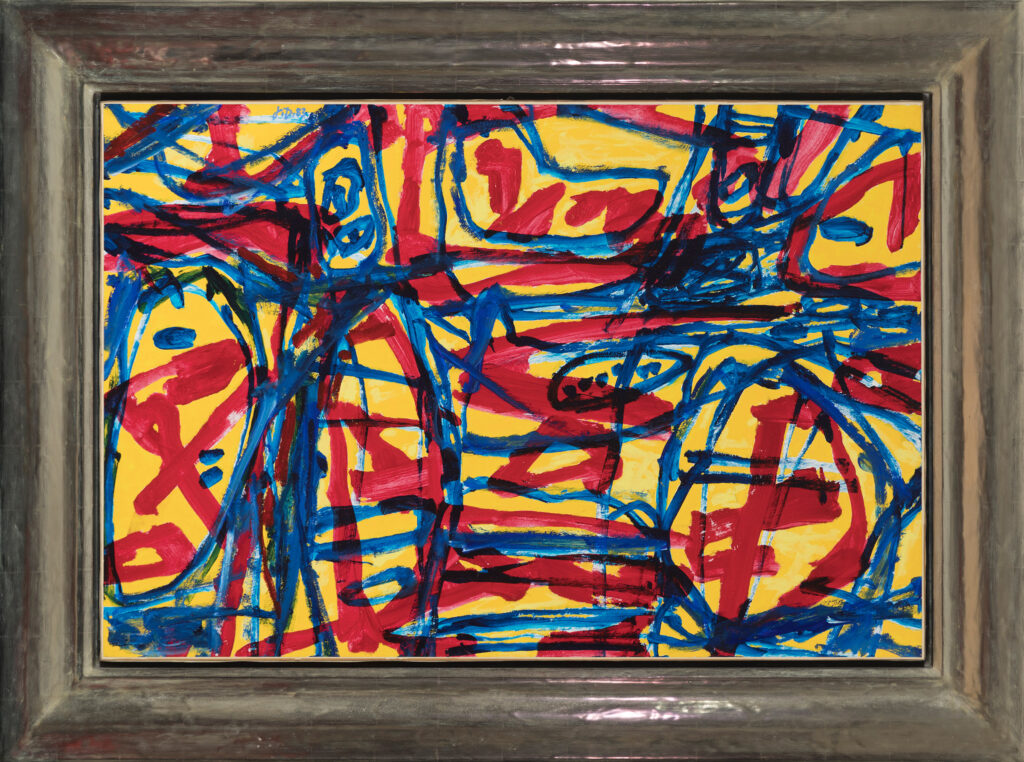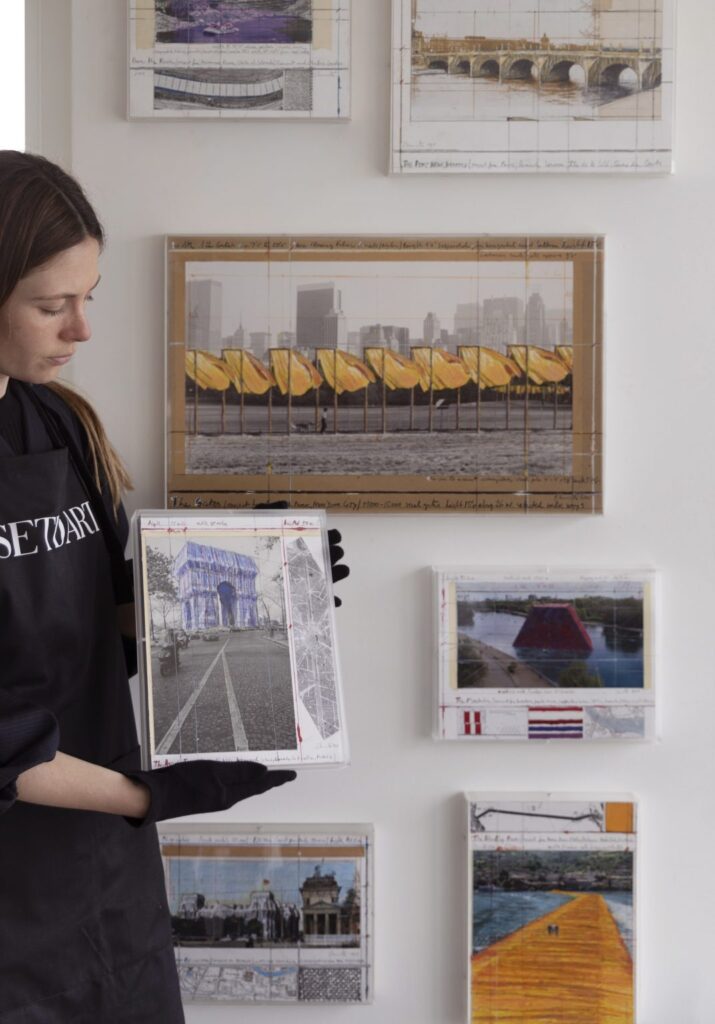Important private collection
The collection on sale on June 12 introduces us to the fascinating Second Avant-Garde through its great protagonists: Andy Warhol, Keith Haring, Jean Dubuffet, Pierre Alechinsky, Christo, Yves Klein and Nicky de Saint Phalle.
Around the decade of the 1940s, a vibrant period in the history of art began whose imprint on the world of creativity has had a decisive influence on the future development of artistic practice. The Second Avant-Garde brought with it a second wave of innovation, rupture and transgression that, from the First Avant-Garde, leads us on a stimulating journey through an absolutely transformative 20th century.
After World War II, a period marked by misery and unrest began, as it could not be otherwise. The horrors of the war wreaked havoc on a political and social level but also defined the new challenges that artistic practice had to face. The failed utopian project of the pre-war avant-gardes and the emptiness caused by the loss of referents translated into a new form of representation dominated by a feeling of tearfulness in which aesthetic enjoyment as it had been understood until then, loses its traditional conception. The political and cultural crisis that shook Europe caused the world’s artistic capital, which until then had been Paris, to move to New York. However, as can be seen in this collection, the polarity between the two creative centers energized and encouraged the artistic practice of this fertile and creatively intense period in which different styles and movements followed one another at a frenetic pace.
In this sense, the ensemble we present here reflects and encourages the dialogue that was established between the artistic proposals of both capitals. Through artists such as Dubuffet and Sam Francis we connect French Informalism with American Abstract Expressionism, whose origin is based on the same foundation: the existential crisis arising from the moral blow of the war. The need to find new forms and codes of representation to express the alienation of human beings and their loss of identity led them to show a special interest in surrealism in their conception of painting as a psychic act. The unconscious and the technique of automatism that now manifests itself on the canvas through signs and calligraphies of wild appearance, completely define this new aesthetic conception based on textures, materials and gestures, that beauty that Dubuffet identified as “an other beauty” in which the work and its surface become a symbol of the image of the world.
At the same time, the COBRA group, represented in the collection by artists such as Karel Appel and Pierre Alechinsky, saw in the primitive art of children and the mentally ill, as well as in surrealist automatism, the most authentic example of free and original art. approaching in this aspect to Dubuffet’s artistic conception. However, unlike the latter, his works are often more visceral due to the influence that German expressionism exerted on them.
Continuing with abstract artistic expressions and in the midst of the triumph of American expressionism, Op Art burst onto the scene. with an opposite premise to that of abstract expressionism: while in the latter the relevant aspect was the relationship between artist and work during the act of creation, figures such as Vasarely put the focus on the spectator, who with his or her action of looking completed and gave meaning to the work.
As a reaction to these movements stripped of external references, Pop Art and New Realism emerged on both sides of the Atlantic. While Pop, led by Andy Warhol, turned triviality into a subject worthy of aesthetic treatment and monumentalized it through the technique of enlargement, reflecting the icons of mass culture in an intelligent and critical way, the new realism of Yves Klein or Niki de Saint Phalle was born to reclaim the return to the social and the human being as the essential subject of art.
Artists such as Christo, initially ascribed to the new realism, evolved towards other creative paradigms, such as Land Art, which show us once again the fertile ground under which the art of the second half of the century developed. Together with his wife, Christo transcended the limits of traditional disciplines by fully embracing the fusion of art with the natural environment. Using nature as a canvas, the couple creatively joined forces to transform our environment into extraordinary scenarios by creating temporary installations that interact harmoniously with the surrounding nature.
The effervescence of this period brought together various movements such as Street Art and Pop Art, which exerted a reciprocal influence. Just as Warhol is considered the king of Pop Art, Haring was undoubtedly the precursor and visible head of Street Art. In fact, both artists have become icons of New York culture in the 1980s as “leaders” of a cultural revolution that came to define an entire era. Their intertwined lives and mutual influence were undoubtedly the catalyst for a new wave in the evolution of popular culture that perfectly defined the spirit of society at the time.
As a whole, this collection of art from the second avant-garde is a testament to the power of art to challenge, inspire and transform. Each work is a window to a world of infinite possibilities, where imagination is the only limit. It is a reminder that art not only reflects reality, but also redefines it.















